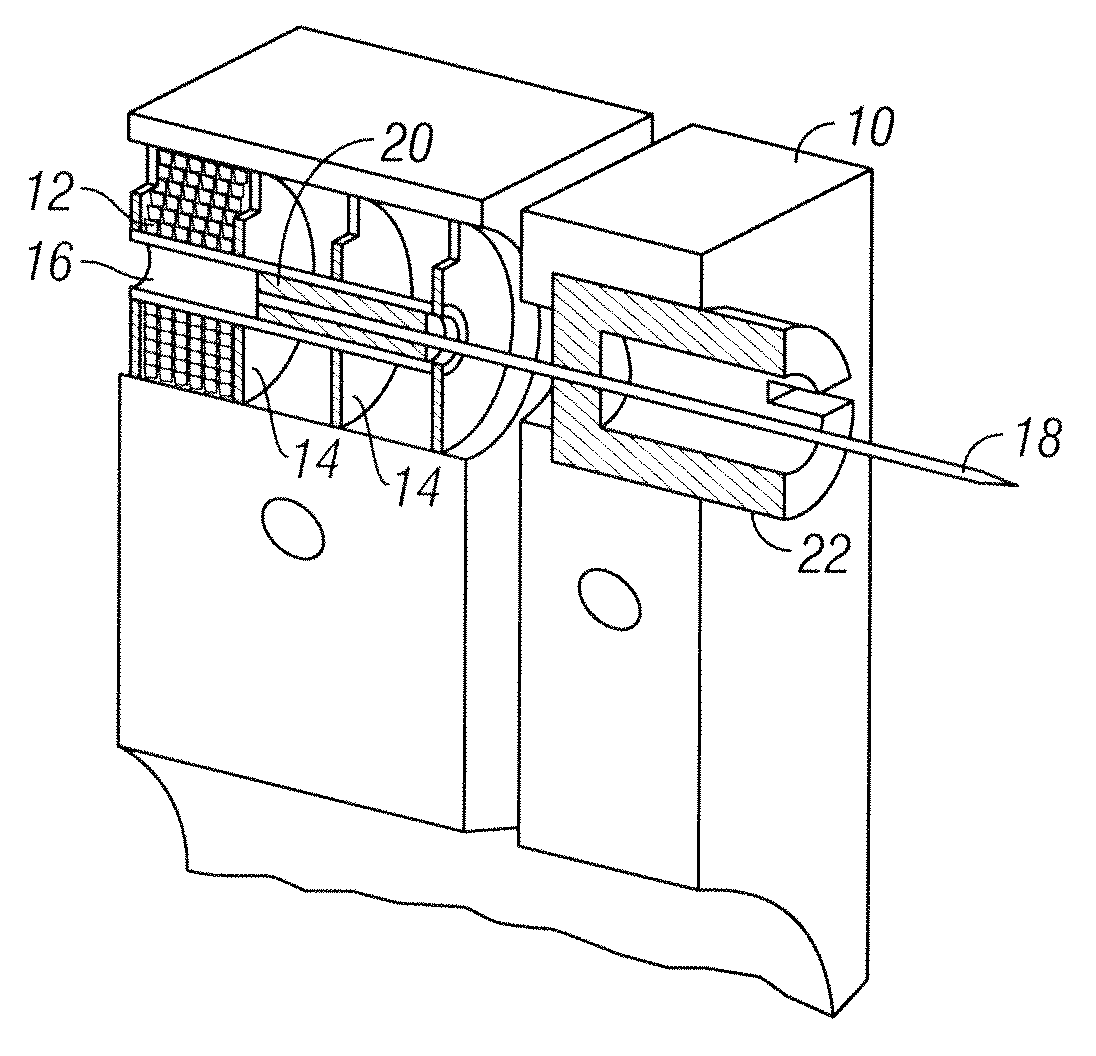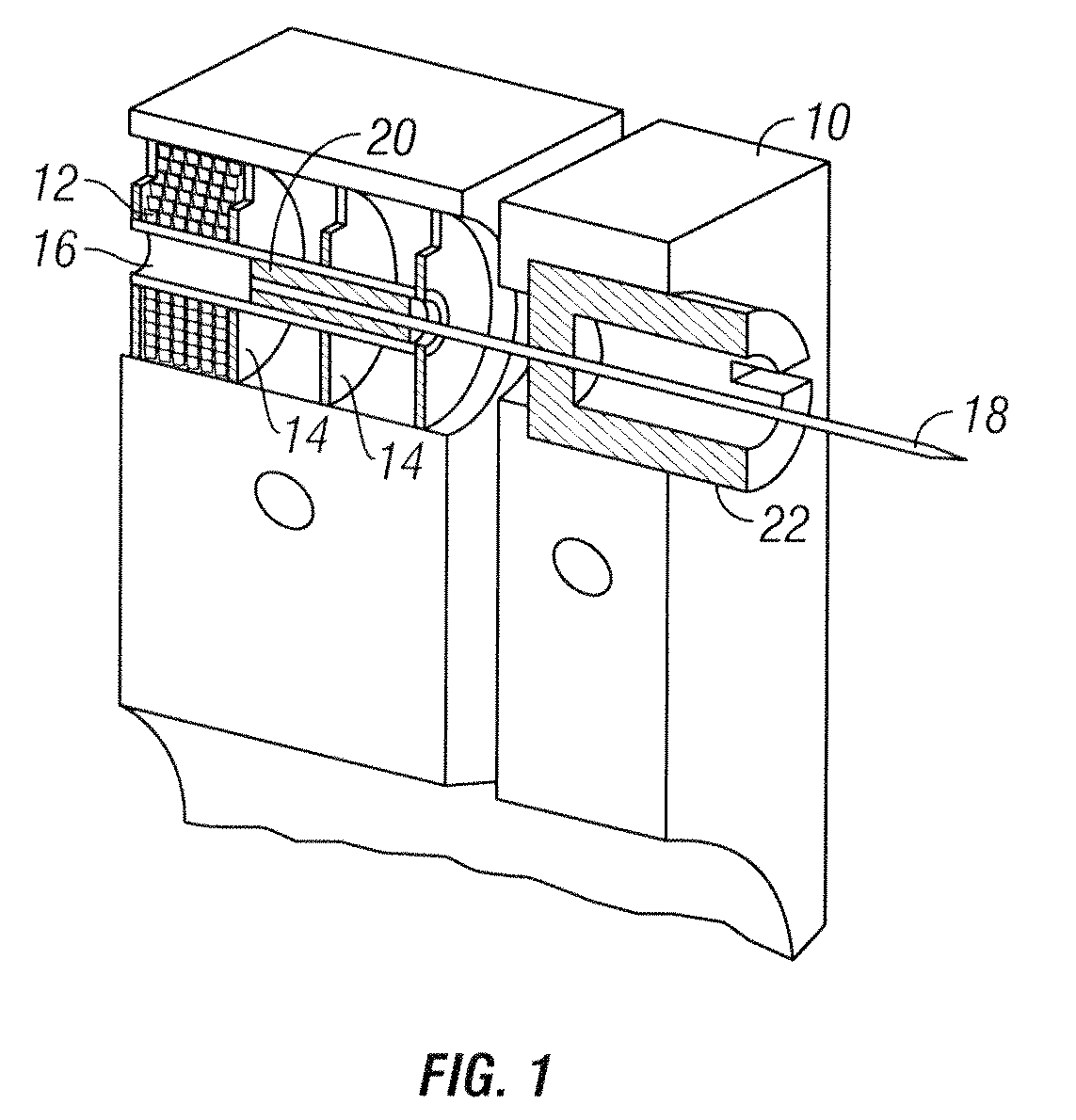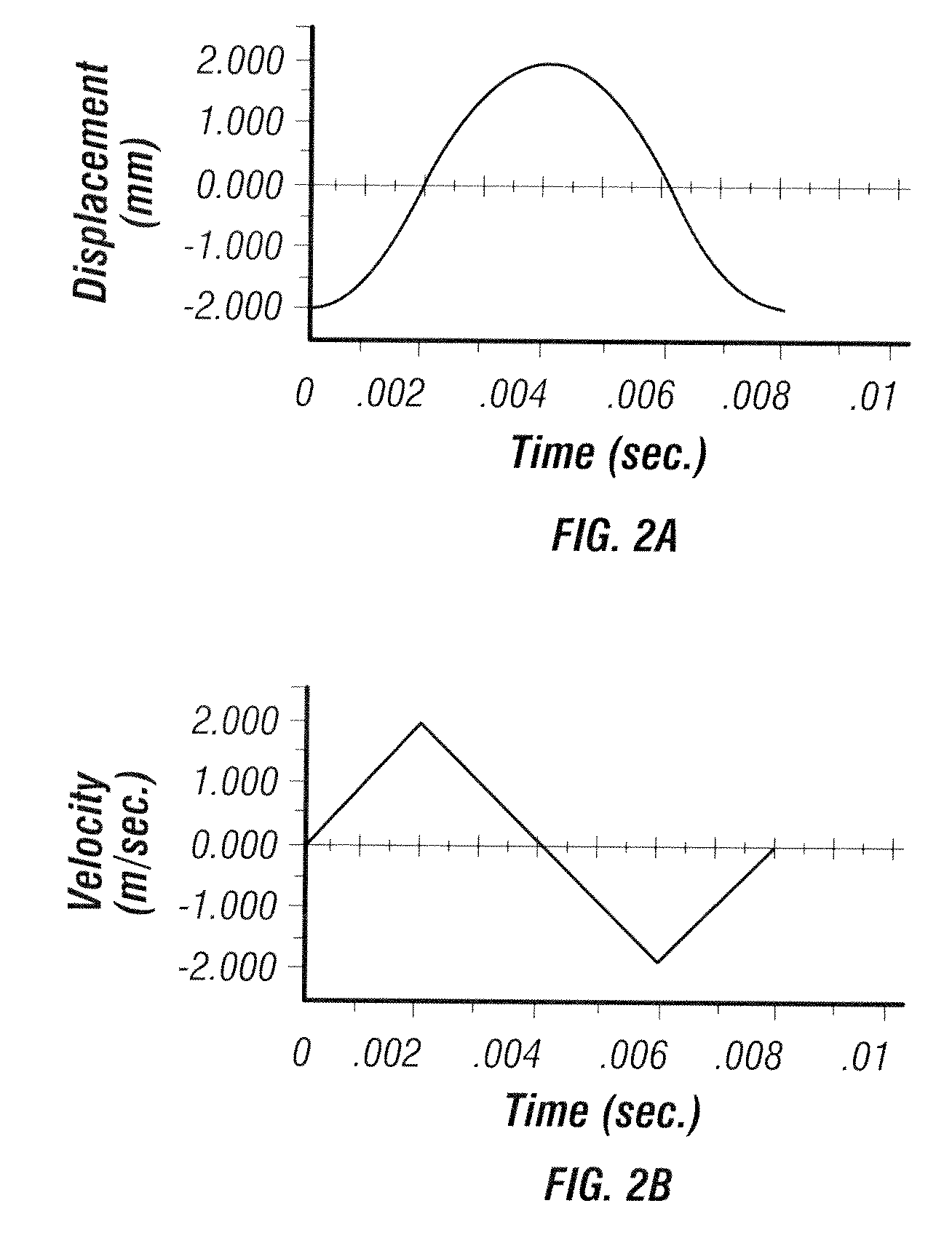Method and apparatus for a fluid sampling device
a fluid sampling and fluid technology, applied in the field of analyte detection devices, can solve the problems of multiple strikes due to recoil, inability to combine the lancing process with the sample acquisition and testing step, and discourage patients from testing
- Summary
- Abstract
- Description
- Claims
- Application Information
AI Technical Summary
Benefits of technology
Problems solved by technology
Method used
Image
Examples
example 1
Hydrostatic Pressure Test
[0110]The objective is to test whether a suitable film and air gap could withstand a blood pressure equal to that in the capillary blood vessels of the patient after being pierced by a penetrating member.
[0111]The method that was used employed a length of tubing filled with water that was capped at one end by a piece of film intended to simulate skin. Offset from this “skin” was a sample of the film being tested. The height of the free surface of water was set to the maximum pressure likely to be transmitted to the film by the capillary bed, approximately 45 cmH20 (see below). A penetrating member was pushed through the test film and the “skin” and then slowly withdrawn whilst backlit and being filmed by a high speed macro video camera. This process was repeated for a variety of films of differing material and thickness.
[0112]The results are presented in Table 1 and it is shown that the selected film will prevent fluid transmission for pressures of at least ...
example 2
In Vivo Test
[0119]To confirm the laboratory experimentation, the film selection by in vivo testing used a prototype device and live patient.
[0120]The barrier film and foam offset pad were applied to the prototype device. The device was then placed against the finger of the patient and fired. The barrier was inspected on the Mitutoyo after the lancing operation at 96× magnification.
[0121]The barrier film showed no transmission of blood. During this testing it was also shown that the blood is not smeared on the blood barrier and that a sufficient sample of blood is left on the patient skin for analytical testing.
[0122]FIG. 37 shows a fluid sampling device with finger; FIG. 38 shows a blood drop on patient side of film (16×); FIG. 39 shows device side of film after firing into finger (96×).
[0123]The laboratory tests and theoretical equations support the hypothesis that the design is effective in preventing contamination of the device by blood.
example 3
Foreign Body Implantation
[0124]It is desirable that the penetrating member does not carry material from the adhesive blood barrier with it and implant it into the patient. The film is an elastic and ductile material being punctured by a sharpened point and it is therefore highly unlikely that pieces will be separated off and carried with the lubricated penetrating member tip. The following inspections were carried out to confirm this.
[0125]A digital photograph of the penetrating member was taken immediately after firing through the adhesive film. This inspection was made along the length of 10 penetrating members after firing through the adhesive film.
[0126]The film was inspected after firing through it.
[0127]A high frame-rate (2000 frames / second) digital video was taken of the lancing operation from the patient side.
[0128]No plastic material or adhesive was seen stuck to the penetrating member.
[0129]Inspection of the film using the Mitutoyo after piercing did not suggest that mater...
PUM
 Login to View More
Login to View More Abstract
Description
Claims
Application Information
 Login to View More
Login to View More - R&D
- Intellectual Property
- Life Sciences
- Materials
- Tech Scout
- Unparalleled Data Quality
- Higher Quality Content
- 60% Fewer Hallucinations
Browse by: Latest US Patents, China's latest patents, Technical Efficacy Thesaurus, Application Domain, Technology Topic, Popular Technical Reports.
© 2025 PatSnap. All rights reserved.Legal|Privacy policy|Modern Slavery Act Transparency Statement|Sitemap|About US| Contact US: help@patsnap.com



